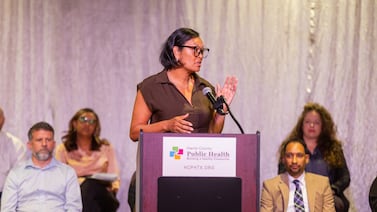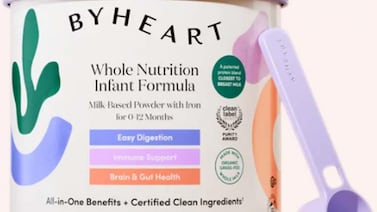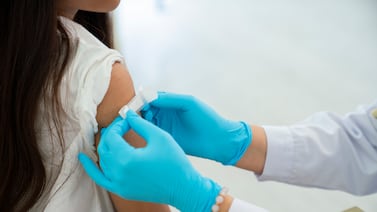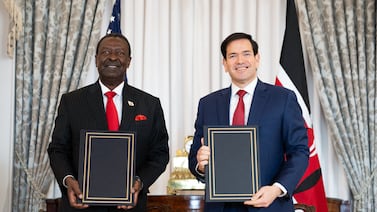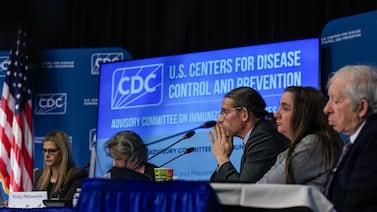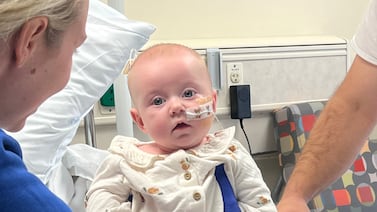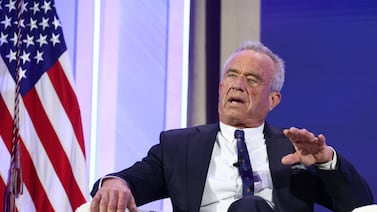National
Ericka Brown, local health official for Harris County Public Health, aims to improve community wellness by addressing both the medical and social factors that contribute to health disparities.
Infant botulism outbreak linked to ByHeart formula prompts warnings to major retailers, calls for tougher regulation.
After a senior FDA official claimed that Covid vaccines had caused the deaths of “at least 10 children,” 12 former FDA commissioners released a warning that the claims and policy changes pose “a threat to evidence-based vaccine policy and public health security.”
Other gaps in protection against the highly contagious disease include access to hard-to-reach clinics and ‘social determinants of vaccination.’
Healthbeat asked 10 of the nation's largest maternity hospitals and systems that deliver the most babies about their policies for giving hepatitis B vaccines at birth and whether they are changing. Most wouldn't answer.
‘They get to reintroduce public health to America,’ says former assistant surgeon general as he shares insights on his students, outbreaks and the crisis at CDC.
Influenza is arriving earlier, spreading faster, and sending more people to the hospital - already.
The Supreme Court wants a lower court to take a second look at New York’s school vaccine mandate in light of the Mahmoud decision. New York is among several states that removed religious exemptions in the face of disease outbreaks.
Many clinicians and epidemiologists fear abandoning the universal birth dose of the hepatitis B vaccine could reverse three decades of progress toward eliminating a disease that still infects as many as 2.4 million Americans and kills tens of thousands each year.
In 2026, the question facing governors, mayors, and local health officials is glaring: What can be done now to protect public health if the federal government will not?
Marco Rubio praises the ‘America First’ agreement as a new approach. How old challenges play out remains to be seen.
HIV physician John Weiser talks about why complying with President Donald Trump’s orders to erase transgender people is bad for science and society. And he notes that acquiescing didn’t spare the CDC from further harm.
Universal infant and childhood vaccination against hepatitis B, recommended since 1991, has reduced by 99% the number of reported cases among U.S. children, adolescents, and young adults.
Losing its measles-free status could be expensive for the U.S. A new study estimates that an outbreak the size of the one in West Texas earlier this year, with 762 cases and 99 hospitalizations, costs about $12.6 million.
The ACIP is also expected Friday to be briefed on the childhood immunization schedule by a vaccine critic, drawing outrage from U.S. Sen. Bill Cassidy. "The ACIP is totally discredited," Cassidy said.
A CDC vaccine advisory committee – whose members were replaced with appointees of HHS Secretary Robert F. Kennedy Jr. – is scheduled to take another series of votes that could reshape longstanding recommendations to protect babies against the cancer-causing hepatitis B virus.
With large donor countries – especially the U.S. – pulling back, a global development think tank has a new idea for funding programs that fight AIDS, tuberculosis, and malaria.
ByHeart’s recall of all of its formula products amid a growing nationwide outbreak of infant botulism has shaken the trust of moms and caregivers – not just in ByHeart’s formula, but also in formula made by other brands.
The hepatitis B virus is transmitted through blood and bodily fluids, even in microscopic amounts, and the virus can survive on surfaces for a week.
The leader of the Association of Food and Drug Officials told Healthbeat that the FDA has been slow to share distribution lists for recalled ByHeart formula. “I’m not sure they recognize the sense of urgency,” he said.

